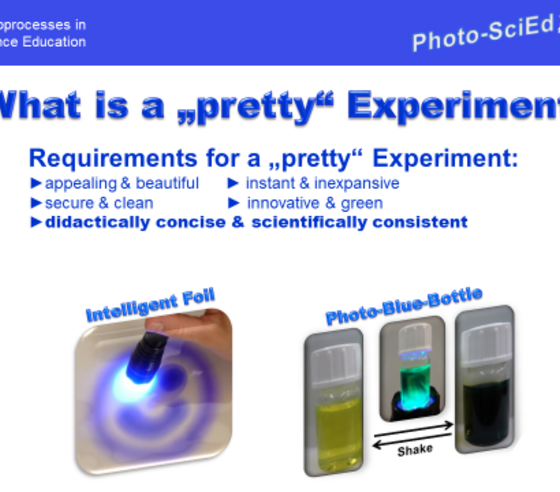2. What is a “pretty” experiment?
An experiment can be considered "pretty" if it exhibits the following characteristics:
- attractive and beautiful—i.e. it stimulates our senses and our mind in a pleasant and motivating way;
- simple and “green“—i.e. it addresses new teaching contents and opens up future-relevant applications;
- instant and inexpensive—i.e. can be carried out quickly, with low consumption of chemicals, and with low cost equipment;
- didactically concise and scientifically consistent—i.e. the observations and measurement data directly introduce the theoretical concept to be communicated (“they hit the nail on the head”) and the didactic exploitation of the results can be compatible with the state of the art in scientific knowledge without necessarily using the most recent terms, models etc. discussed in science.


The requirement for didactic conciseness and scientific consistency means that experiments must provide satisfying answers to the following questions:
- Does this experiment contain or suggest connections to students' everyday experiences?
- Is this experiment suitable for school? If so, for which school level (lower secondary I or upper secondary level) and in what type (demonstration, group or individual experiment) should it be carried out?
- What can we learn from this experiment? Which key concepts and technical terms in chemistry can we develop on the basis of the facts from this experiment?
- Which applications of the phenomena and/or model-theoretical explanations from this experiment exist today and which could be considered for the future?
